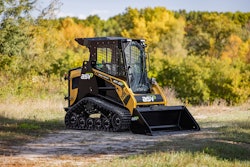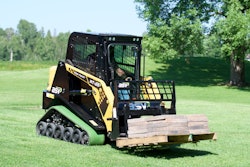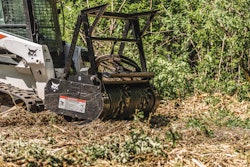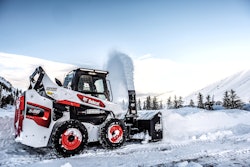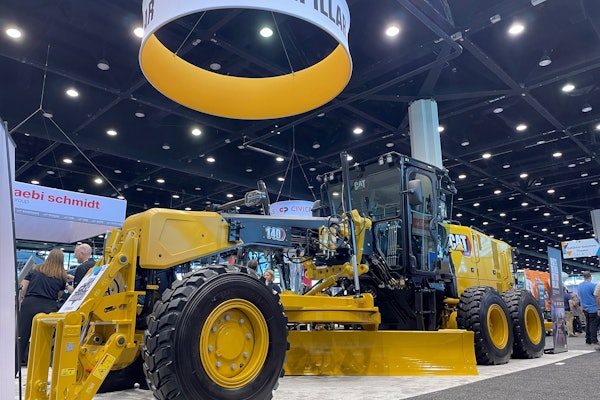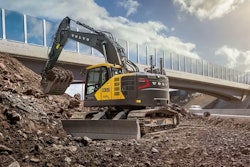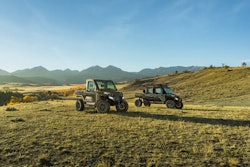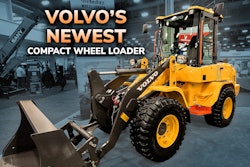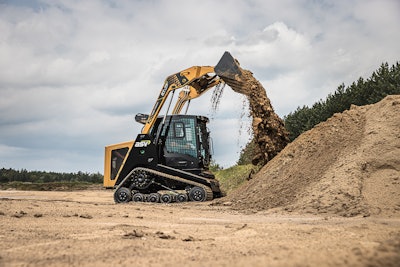
Compact track loaders have emerged as the darlings of the construction industry.
They’re versatile, productive, comparatively low cost, and easy to operate and transport. They provide excellent value even when subjected to the worst management practices.
So how do you get the most out of your CTL? How do you know when it’s time to trade up? And what features should you look for when buying a new compact track loader?
We have the answers here, along with a rundown of the latest compact track loaders on the market:
Buy new or stay put?
Unlike production machines such as wheel loaders, CTLs have widely varying utilization rates and widely varying duty cycles when serving in multiple applications. Because of this, it’s hard to know when to replace CTLs with new models.
“A lot depends on the customer,” says Buck Storlie, ASV product manager. “Some run the machine for a long time, up to 8,000 hours. Others trade in at the first major service, such as an undercarriage rebuild.”
Storlie points out that downtime from an older machine can be more costly than the acquisition of a new one. “Risk goes up with time; so much of the decision of when to buy new comes down to the customer’s risk tolerance.”
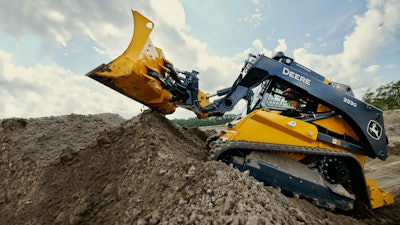 The vertical-lift John Deere 333G has a Yanmar engine rated at 100 net horsepower and an operating weight of 12,100 pounds. Attachments for this and other large-frame Deere CTLs include mulching heads, grapples and snowblowers. The optional EH Boom Performance Package provides self-levelling up and down or up only, return-to-carry, return-to-dig and boom height kickout.John Deere
The vertical-lift John Deere 333G has a Yanmar engine rated at 100 net horsepower and an operating weight of 12,100 pounds. Attachments for this and other large-frame Deere CTLs include mulching heads, grapples and snowblowers. The optional EH Boom Performance Package provides self-levelling up and down or up only, return-to-carry, return-to-dig and boom height kickout.John Deere
“There is no single best answer as to when to buy new,” says Luke Gribble, solutions marketing manager, John Deere, “and with simple maintenance, CTLs can last a really long time. But a lot of customers want to stay in warranty coverage, whether standard or extended, and they set replacement cycles based on that.”
Kevin Coleman, Cat product specialist, says simply monitoring machine health can be a good way of determining when to replace a CTL. “A strong maintenance strategy ensures equipment health but also identifies emerging issues, as does fluid analysis.”
He says an intuitive operator notices and should report changes in the way the loader feels and performs. Owners should closely track ownership costs, especially maintenance costs and repair costs, “which are two separate items,” says Coleman, “even though they often get lumped together as ‘maintenance-and-repair costs’ in communication.”
 Cat’s radial-lift 279D3 has a Cat C3.3B DIT (turbo) engine rated at 73.7 net horsepower. ROC is 2,220 pounds at 35% of the 6,345-pound tipping load. Operating weight is 10,095 pounds. The available Advanced Display provides on-screen adjustments for implement response, Hystat response and creep control as well as customizable layouts and rearview camera monitor.Caterpillar
Cat’s radial-lift 279D3 has a Cat C3.3B DIT (turbo) engine rated at 73.7 net horsepower. ROC is 2,220 pounds at 35% of the 6,345-pound tipping load. Operating weight is 10,095 pounds. The available Advanced Display provides on-screen adjustments for implement response, Hystat response and creep control as well as customizable layouts and rearview camera monitor.Caterpillar
Ryan Anderson, product marketing manager, New Holland Construction North America, says tracks are the most vulnerable part of an undercarriage and can indicate wear on other parts of the system.
“Tracks are expensive in themselves at $2,500 or more per side, but accelerated track wear or premature track failure is a good indicator of excessive wear or imminent failure of other components, which also gets expensive in a hurry,” he says. “Track life can be a good indicator whether it’s time to replace that machine.”
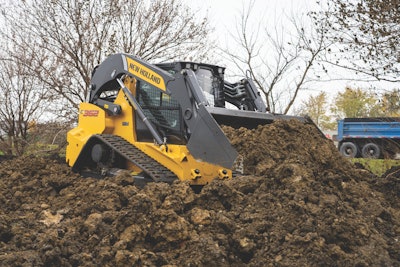 The New Holland C362 is a vertical-lift machine featuring the company’s Super Boom design, which provides greater lift height and reach for loading to the center of high-sided trucks and hoppers. The FPT engine is rated at 114 horsepower. Relief pressure is 4,100 psi, and flow is 41.6 gallons per minute. ROC is 6,200 pounds at 50% of the 12,400-pound tipping load.New Holland
The New Holland C362 is a vertical-lift machine featuring the company’s Super Boom design, which provides greater lift height and reach for loading to the center of high-sided trucks and hoppers. The FPT engine is rated at 114 horsepower. Relief pressure is 4,100 psi, and flow is 41.6 gallons per minute. ROC is 6,200 pounds at 50% of the 12,400-pound tipping load.New Holland
When new makes sense
New machines project a better image of the company and help in attracting and retaining operators. Coleman advises determining whether a particular CTL is a core or support machine, and make replacement decisions accordingly.
Two other considerations: CTLs tend to hold their residual value well, so there’s no sweet spot in the depreciation curve to encourage replacement. Second, if the CTL is mainly a bucket-and-forks machine, it can likely continue to serve well in that capacity for a long time.
Also, if you want equipment that can go beyond buckets and forks, or you want to use bigger buckets and forks, it makes sense to move up to a new loader.
“For contractors looking to break into a new market or type of job, a new CTL can provide significant application enhancements through increased power, productivity, fuel economy and jobsite efficiency,” says Mike Fitzgerald, Bobcat marketing manager.
He says the R Series loaders from Bobcat were designed to be stronger and more durable. As an example, the lift arms on the R Series use cast steel components that are 20% stronger than fabricated steel. Lift arm profile is also smaller, improving visibility for the operator.
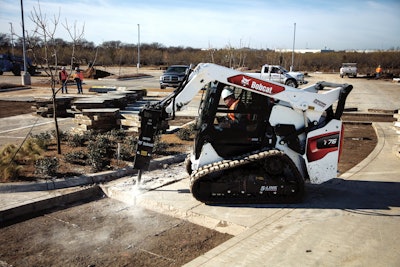 The vertical-lift R Series T76 from Bobcat has a 74-horsepower engine and an operating weight of 10,250 pounds. System relief pressure is 3,500 psi at the quick-connect couplers. Standard auxiliary flow is 23.3 gallons per minute; the high-flow option provides 30.3 gpm. Rated operating capacities are 2,900 pounds ISO and 4,143 pounds at 50% of tipping load. Joystick control is standard.Bobcat
The vertical-lift R Series T76 from Bobcat has a 74-horsepower engine and an operating weight of 10,250 pounds. System relief pressure is 3,500 psi at the quick-connect couplers. Standard auxiliary flow is 23.3 gallons per minute; the high-flow option provides 30.3 gpm. Rated operating capacities are 2,900 pounds ISO and 4,143 pounds at 50% of tipping load. Joystick control is standard.Bobcat
Depreciation can be tracked similarly, he says. If conditions arise so that the depreciation ticks up sharply (or residual value falls steeply), “trade-in value might be the tipping point for the feasibility of purchasing a new CTL.”
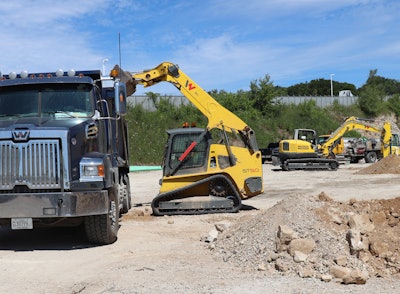 Wacker Neuson’s ST50 delivers 5,000 pounds of ROC at 50% of tipping and is available with electrohydraulic hand/foot or selectable ISO or H-pattern controls. The Kohler engine is rated at 100 horsepower. Pressure is 3,500 psi with 25.1 gallons per minute standard flow or 37.4 gpm optional high flow. Nearly 30 attachments are available for use with the ST50.Wacker Neuson
Wacker Neuson’s ST50 delivers 5,000 pounds of ROC at 50% of tipping and is available with electrohydraulic hand/foot or selectable ISO or H-pattern controls. The Kohler engine is rated at 100 horsepower. Pressure is 3,500 psi with 25.1 gallons per minute standard flow or 37.4 gpm optional high flow. Nearly 30 attachments are available for use with the ST50.Wacker Neuson
{Related Content: How to Calculate the Owning & Operating Costs of a Compact Track Loader}
Other signs it’s time to go new
Do you often rent or borrow a CTL because the one you own is not up to the tasks you’re performing?
“You may be able to perform those tasks with a newer, more capable machine,” says Jeff Jacobsmeyer, Case product manager. “It boils down to a basic discussion of whether you can perform the work you need to do with the tools you have. If not, you may be better served with a new machine.”
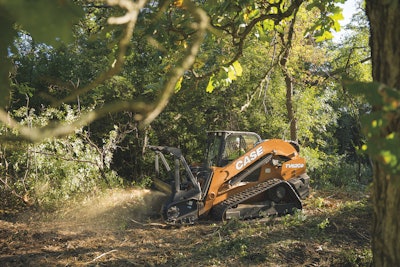 The vertical-lift Case TV620B has an FPT engine rated at 114 horsepower and an operating weight of 16,300 pounds with operator and fuel. Maximum travel speeds are 8.7 mph for rubber tracks and 5.9 mph for steel tracks in high range. Pressure is 4,351 psi, and flow is 24.2 gallons per minute standard or 41.6 gpm with the high-flow option. Track length on ground is 74 inches.Case CE
The vertical-lift Case TV620B has an FPT engine rated at 114 horsepower and an operating weight of 16,300 pounds with operator and fuel. Maximum travel speeds are 8.7 mph for rubber tracks and 5.9 mph for steel tracks in high range. Pressure is 4,351 psi, and flow is 24.2 gallons per minute standard or 41.6 gpm with the high-flow option. Track length on ground is 74 inches.Case CE
The ability to move more material per hour or with less fuel per unit of material provides other likely advantages of buying a new machine.
Given the versatility of new CTLs, Clowes says, “if you have an application that requires two machines, and that application can be accomplished with one new machine of greater production or versatility, then you could save money with that single new machine rather than two existing machines plus two operators.” He cites the JCB Teleskid 3TS-8T for the extreme versatility afforded by its telescoping boom.
 JCB retains its single-arm Powerboom design with up to 20% more steel than twin-arm designs. Powerboom allows side-door entry and exit and contributes to 60% better operator visibility than other CTLs. While machines can be spec’d to meet customers’ unique needs, JCB offers its Yellow Series of machines in the most popular configurations for quicker acquisition, as well as Teleskid and Forestmaster configurations.JCB
JCB retains its single-arm Powerboom design with up to 20% more steel than twin-arm designs. Powerboom allows side-door entry and exit and contributes to 60% better operator visibility than other CTLs. While machines can be spec’d to meet customers’ unique needs, JCB offers its Yellow Series of machines in the most popular configurations for quicker acquisition, as well as Teleskid and Forestmaster configurations.JCB
Coleman notes that while incremental advances in performance, operator comfort and productivity in new machines all have value, the greatest value is found in the most significant advances. Cat’s Smart Dozer Blade, Smart Grader Blade and Smart Backhoe attachment are such advances, he says. Each integrates the attachment with the CTL.
Guidance for buying a new CTL
Now that you’ve made a decision to buy a new CTL, it’s time to decide on the type of machine.
The fundamental decision in buying a compact track loader, says Lee Padgett, Takeuchi-U.S. product manager, is radial or vertical lift.
The rule of thumb is that radial lift is best for applications done from where the lift arms are horizontal and below, such as grading and dirt work. Vertical lift is better for applications with the arms above the horizontal centerline of the machine, such as load-and-carry and truck loading.
Padgett says the second fundamental decision is standard or high-flow hydraulics.
“Customers who want versatility should choose a machine with high-flow hydraulics because that will increase the range of attachments the machine can use. If they have a broad service menu or know they want to expand the services they offer in the future, high flow is the smart choice.”
High flow also boosts residual value and marketability of the loader when it comes time to trade it in or sell it.
So why not just get the high-flow option and be done with it?
“If they specialize in one specific task or know they’ll be able to work efficiently with standard-flow attachments, they may not benefit from the additional investment required for high-flow hydraulics,” says Padgett.
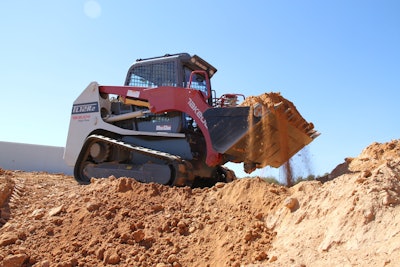 The TL12R2 from Takeuchi is a radial-lift machine with a 12,590-pound operating weight (cab), tipping load of 8,629 pounds, and an ROC of 2,975 pounds at 50% of tipping load. The Kubota engine is rated at 111 horsepower. Hydraulic pressure is 3,481 psi with standard flow of 23.2 gallon per minute and optional high-flow of 40.4 gpm. The cab features a new design with low-effort overhead door for improved entry and exit.Takeuchi
The TL12R2 from Takeuchi is a radial-lift machine with a 12,590-pound operating weight (cab), tipping load of 8,629 pounds, and an ROC of 2,975 pounds at 50% of tipping load. The Kubota engine is rated at 111 horsepower. Hydraulic pressure is 3,481 psi with standard flow of 23.2 gallon per minute and optional high-flow of 40.4 gpm. The cab features a new design with low-effort overhead door for improved entry and exit.Takeuchi
Track tread pattern is another fundamental consideration, says Coleman.
Cat offers two patterns: bar and block. The bar tread pattern is the best for general, all-season use, including snow removal. It creates minimal surface disturbance and is therefore preferred for grading. The block style tread is a rugged pattern style and works well in rough terrain, in aggregate and for rental machines.
When it comes to operator comfort, suspension is also a key consideration.
Storlie says that although suspension provides significant improvements in operator comfort and load retention, not all OEMs offer it as standard. Non-suspension models are provided to hit price points, especially in the rental market.
“ASV has been doing suspension for over 30 years, and it’s standard on all our CTLs,” he says.
Available on larger ASV models is a dual-level system where the idler wheels have torsion suspension to isolate them from the undercarriage, and the undercarriage has torsion suspension to isolate it from the operator.
Many new models have entirely new feature sets; so it’s important to understand what those are and the value they offer. Telematics is one of those features buyers should focus on.
“The Case TV620B features the SiteConnect module,” says Jacobsmeyer, “which provides greater flow of telematics data and also serves as the gateway for remote connectivity.” With the SiteConnect module and SiteManager app, owners can grant dealers remote access to their machines for faster diagnosis and repair if problems develop.
Regardless of how the decision is made to replace a CTL, Devins says, customers should have a plan for acquiring a new machine. Lead times are currently long, and availability at the local dealer is likely to be limited.
CTL maintenance
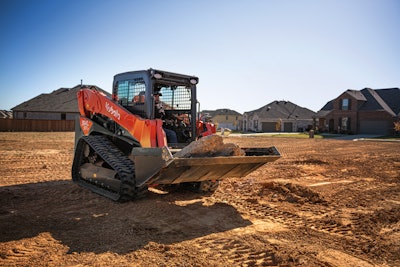 Standard features on the Kubota SVL97-2 include self-levelling of the bucket during lift and two-speed travel for a 7.3 mph top speed. Horsepower is rated at 96.4; operating weight is 11,574 pounds (cab), and ROC is 3,200 pounds at 35% of tipping load. The vertical-lift design provides 128.5 inches of hinge pin height and 40.7 inches of reach.Kubota
Standard features on the Kubota SVL97-2 include self-levelling of the bucket during lift and two-speed travel for a 7.3 mph top speed. Horsepower is rated at 96.4; operating weight is 11,574 pounds (cab), and ROC is 3,200 pounds at 35% of tipping load. The vertical-lift design provides 128.5 inches of hinge pin height and 40.7 inches of reach.Kubota
When it comes to CTL maintenance, first and foremost is track adjustment. It is often overlooked and should be part of daily inspections.
A track that’s too loose accelerates track wear and may result in the track coming off. A too-tight track accelerates wear on other undercarriage components as well as the track itself.
Padgett says other daily checks include fluid levels. Fuel/water separators should be drained. Look for damaged lines and cylinders and hydraulic leaks. Clean hydraulic couplers before connecting attachments. Keep an eye on hydraulic oil temperatures, especially when running high-flow attachments such as mulchers. Keep debris out of the tracks.
Anderson says a clean cab is important for operator comfort by reducing odors and the annoyance of objects clattering around on the floor. It also sets a standard of professionalism for the operator.
On the area below the cab, or the “bathtub” of the machine, dirt and litter can collect, impeding cooling and even posing fire risk. The area is filled with hoses and connectors, which are potential fail points.
“This area is not normally seen by the operator nor is it part of a daily walkaround,” says Anderson, “yet conditions that can lead to unexpected downtime are often first seen here. It’s important to schedule regular inspections and cleaning of this area.”




